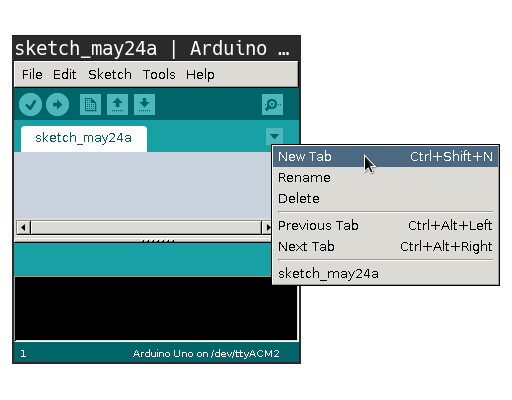DumbServer.cpp

Use the "New Tab" option in the Arduino IDE to create
the files DumbServer.h and DumbServer.cpp
Paste the contents of DumbServer.h /
DumbServer.cpp into the respective
files
Paste the content of ServerExample.ino
into the main sketch file
